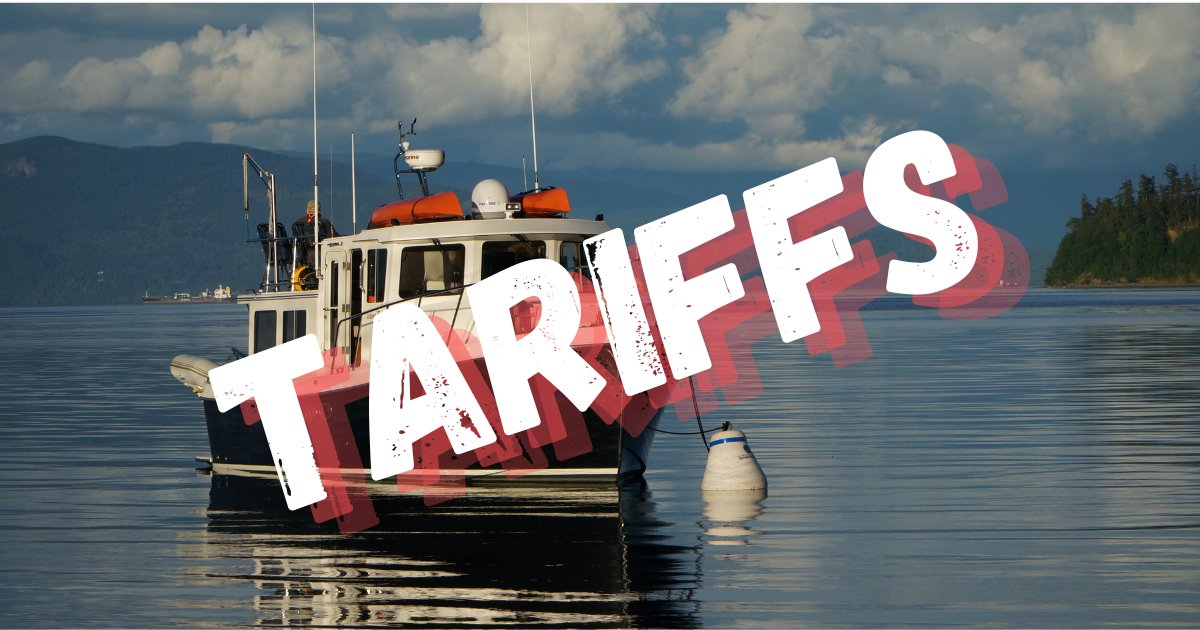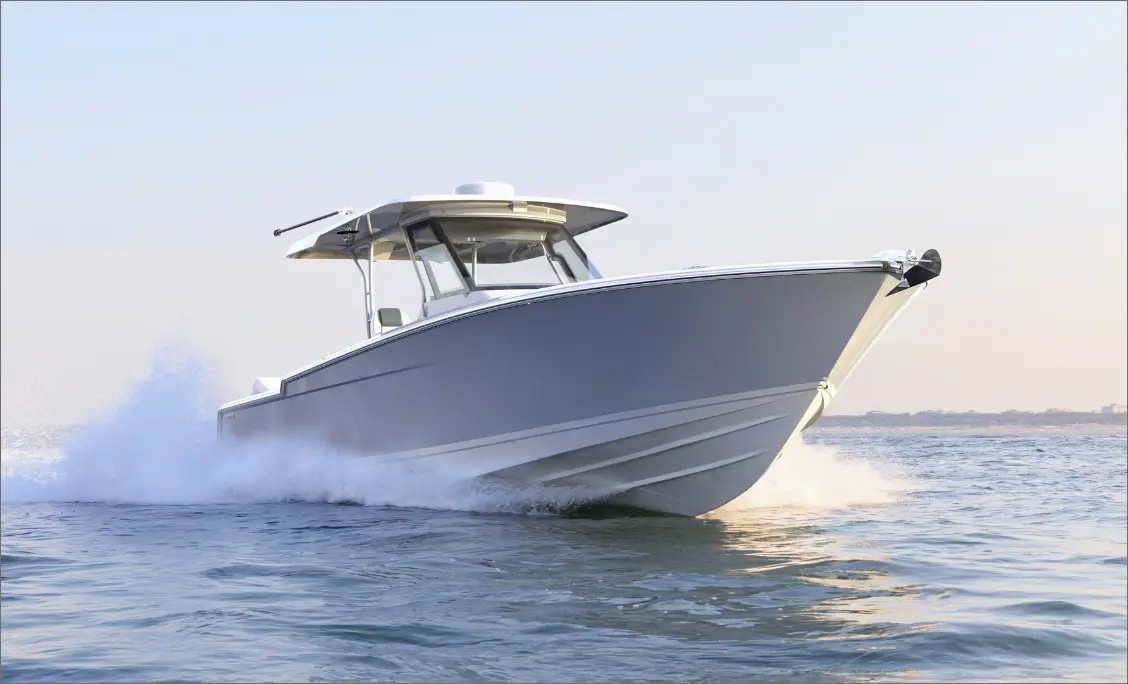Supercharged Jet Ski Razor: Unleashing High-Speed Thrills on the Water
The world of personal watercraft is constantly evolving, with manufacturers pushing the limits of speed and performance. One exciting development in recent years is the emergence of supercharged jet ski razors. These powerful machines take the thrill of jet skiing to new heights by combining the exhilaration of jet skis with the unmatched power of superchargers.

Supercharged jet ski razors offer increased horsepower, impressive acceleration, and unmatched top speeds, making them a popular choice among thrill-seekers and water sports enthusiasts.
With several leading brands and models available, these watercrafts are becoming more accessible to consumers who want to experience the rush of riding a supercharged jet ski. As the industry continues to innovate and develop new technologies, enthusiasts can expect to see further improvements to these already impressive machines.
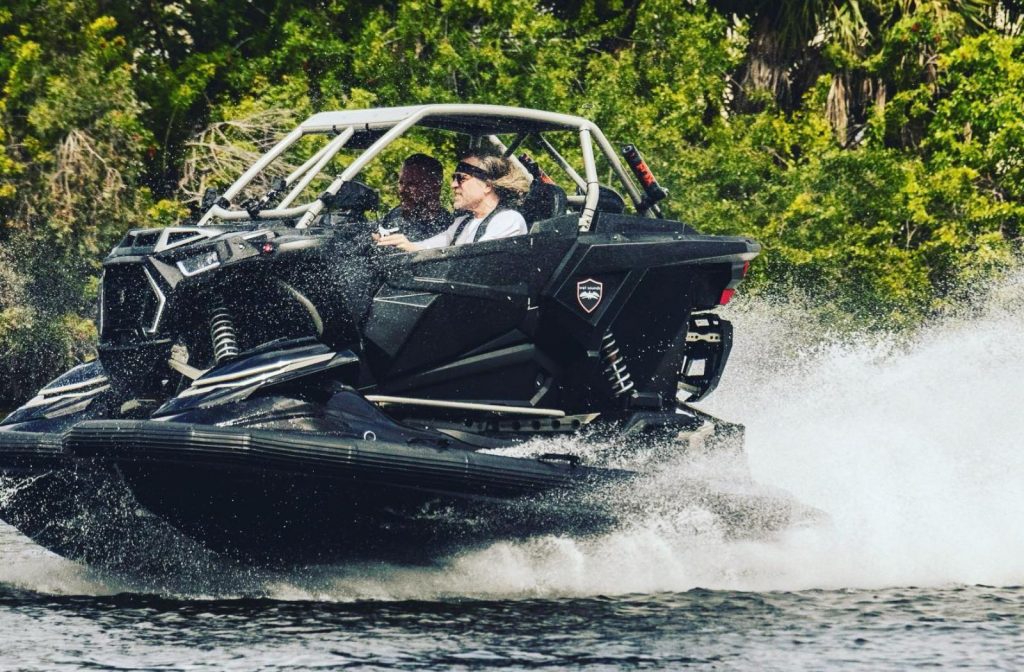
Key Takeaways
- Supercharged jet ski razors deliver increased power and performance beyond traditional jet skis
- A variety of models and brands are available to cater to different needs and preferences
- Ongoing advancements in technology and design continue to push the limits of supercharged jet ski capabilities
Overview of Supercharged Jet Skis
Defining the Supercharged Jet Ski
Supercharged jet skis are personal watercrafts equipped with a supercharger, a specialized unit in the engine that significantly increases power output. These high-performance watercrafts generate between 230 to 310 HP depending on the make and model.
Compared to non-supercharged jet skis, which deliver around 60-180 HP, supercharged models boast greater power, speed, and overall performance.
Historical Development within the Industry
The jet ski industry has seen remarkable advancements over the years. Manufacturers continuously improve their designs and technology to keep up with consumer demands for speed, power, and innovation.
The introduction of supercharged engines in jet skis marked a significant milestone in the industry's evolution. With brands like Yamaha WaveRunners, Sea-Doos, and Kawasaki Jet Skis offering supercharged models rated at 250 HP, 230 and 300 HP, and 310 HP, respectively, these watercrafts have made a prominent impact on the market.
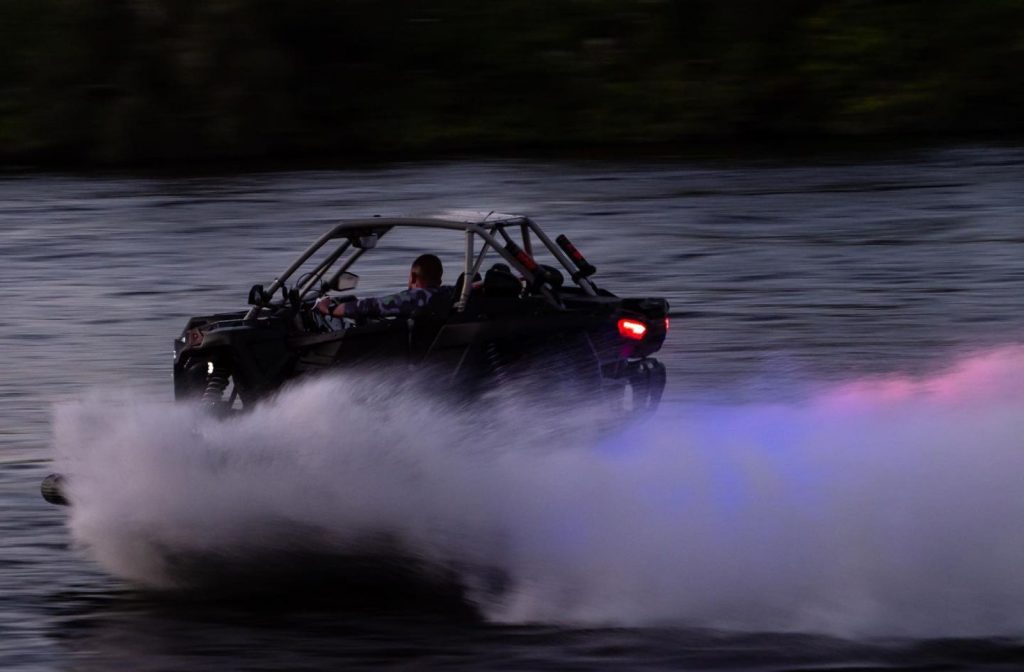
The Mechanics of Supercharged Power
A supercharged jet ski's increased power output results from the addition of a supercharger to its engine. The supercharger compresses air before it enters the engine's combustion chamber, allowing for a denser fuel-air mixture.
This process leads to more powerful and efficient combustion, ultimately resulting in greater power output and performance. For instance, the Kawasaki Ultra 250X delivers an impressive 250 HP through a 1,498cc inter-cooled four-stroke engine, utilizing a roots-style supercharger running at maximum 11.4 pounds of boost.
In recent years, manufacturers have been perfecting their supercharged jet ski offerings. For example, the 2023 Kawasaki Jet Ski Ultra 310X features a 1,498cc supercharged engine and 3D deck design, providing riders with a thrilling experience on the water.
However, it's worth noting that while a supercharged jet ski delivers increased power and performance, it also requires more attention and maintenance. Many enthusiasts consider this a fair trade-off for the exhilarating experience offered by these advanced watercrafts.
Key Features of Supercharged Jet Skis
Engine Specifications and Performance
Supercharged jet skis are known for their high-performance engines that can generate between 230 and 310 HP, depending on the make and model.
For example, Supercharged Yamaha WaveRunners can reach up to 250 HP, while Supercharged Sea-Doos offer 230 and 300 HP options, and Supercharged Kawasaki Jet Skis boast an impressive 310 HP1.
The powerful engines of supercharged jet skis utilize air compressors, which force extra air into the engine and boost their speed capabilities.
In addition to higher horsepower, supercharged jet skis are equipped with advanced technologies that enhance torque and overall performance. The increased power, however, may result in reduced durability and higher maintenance costs2.
Hull Design and Materials
The hull design is a crucial factor in determining the stability and handling capabilities of supercharged jet skis.
Manufacturers often use lightweight and durable materials to create hulls that are hydrodynamic, reinforcing the ski's ability to cut through the water quickly. Some popular hull materials in use today are fiberglass and carbon fiber, which provide an optimal balance of strength and weight reduction.
Supercharged jet skis often employ hull designs with sharp edges and improved water flow to increase cornering capabilities and provide a smoother ride. As a result, these jet skis exhibit an improved level of stability and control when compared to their non-supercharged counterparts.
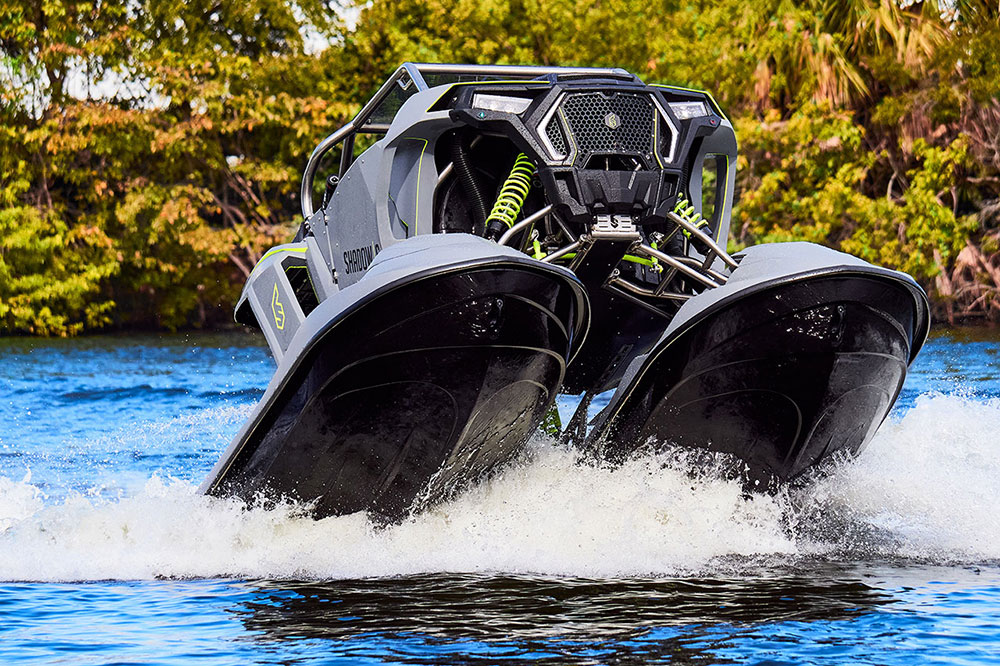
Handling and Stability
Handling and stability are crucial aspects of jet ski performance, and supercharged models are specifically engineered to provide a thrilling yet manageable experience.
With a combination of powerful engines, high-end hull materials, and sophisticated hull designs, supercharged jet skis deliver exceptional performance.
Advanced stability systems are also integrated into many supercharged jet skis, which help riders maintain control at high speeds and during sharp turns. This enhanced stability provides a greater level of confidence while piloting the watercraft.
Footnotes
- (https://www.jetdrift.com/best-supercharged-jet-skis/) ↩
- (https://powersportsguide.com/jet-ski-supercharger/) ↩
- (https://watercraftjournal.com/what-you-should-know-before-buying-a-supercharged-personal-watercraft/) ↩
Leading Models and Brands
Kawasaki Ultra 310X Series
The Kawasaki Ultra 310X series is known for its impressive power and performance in the supercharged jet ski world. These powerful jet skis feature a 1,498cc engine, generating 310 horsepower which makes them the center of attention among thrill-seekers.
Some key features include an electronic throttle valve, fuel economy assistance mode, and 5-way adjustable handlebars. Additionally, the Kawasaki Ultra 310X is equipped with a spacious rear deck and retractable reboarding step, enhancing the overall experience for water sports enthusiasts.

Yamaha Waverunner's Supercharged Offerings
Yamaha's supercharged offerings in their Waverunner lineup showcase remarkable performance and agility on the water.
A notable model is the Yamaha GP1800R SVHO, which is designed with a 1.8-liter supercharged engine that delivers immense acceleration and top speed.
With a top speed of 67 mph and an acceleration of 0-60 mph in under 3.5 seconds, it's perfect for those seeking a thrilling ride.
Moreover, Yamaha Waverunners boast innovative features like the Ride™ system for improved handling and control, as well as advanced hull designs for better stability.

Sea-Doo's High-Performance Models
Sea-Doo is another major player in the supercharged jet ski market with several high-performance models to choose from.
One standout model is the Sea-Doo RXT-X 300, which shares its hull, top deck, and 300 HP engine with the GTX 300 models but is tuned for performance rather than comfort according to JetDrift.
Other noteworthy models include the GTR 230, Wake Pro 230, RXP-X 300, and GTX 230/300/Limited 300. These Sea-Doo models come with advanced features such as the Intelligent Brake and Reverse system (iBR) for better maneuverability and an ergonomic seating design for improved comfort during long rides.
Supercharger Systems and Mechanisms
Examining the Supercharger Kit
A supercharger kit is designed to increase the power of a jet ski or any other vehicle by compressing and forcing more air into the engine's combustion chamber. One of the widely used superchargers for jet ski applications is the Rotrex unit. It is a compact and highly efficient supercharger with a billet mount for instant boost and minimal lag.
The key components of a typical supercharger kit include:
- Supercharger unit: The heart of the system, responsible for compressing and delivering air to the engine.
- Drive assembly: Transfers power from the engine to the supercharger, enabling it to function.
- Mounts: Secure the supercharger and related components in place.
- Intercooler: Cools the compressed air before entering the engine for increased efficiency.

Understanding the Intercooler's Role
The intercooler is a vital component in supercharged systems, as it decreases the temperature of the compressed air coming from the supercharger. Cooler air has a higher density, which results in more power when combined with fuel in the combustion chamber. This process also reduces the risk of engine knocking, which can cause significant damage to an engine if left uncontrolled.
There are two main types of intercoolers:
- Air-to-Air Intercooler: Utilizes ambient air to cool the compressed air through a series of tubes and fins. It's typically lightweight, making it a popular choice for jet ski applications.
- Water-to-Air Intercooler: Utilizes a coolant, like water or glycol, to remove heat from the compressed air through a heat exchanger. While usually heavier and more complex, this type of intercooler can provide more efficient cooling in certain applications.

Innovations in Supercharger Technology
Supercharger technology has come a long way in recent years, with continuous innovation enhancing performance and reliability. Some of the advancements include:
- Materials: Modern superchargers use lightweight, strong materials like aluminium and carbon fiber, which contribute to increased efficiency and reduced weight.
- Design: Improved impeller and compressor designs enable superchargers to deliver higher levels of boost with less heat generation.
- Control systems: Advanced electronics and software enhance supercharger operation, optimizing airflow, efficiency, and reliability.
Performance and Capabilities
Measuring Top Speed and Acceleration
Supercharged jet skis are known for their impressive performance, with engine horsepower ratings ranging from 230 to 310 HP depending on the make and model. They often exhibit greater top speeds and faster acceleration compared to their naturally aspirated counterparts. Given this increase in engine power and efficiency, these personal watercrafts can reach speeds of up to 70+ miles per hour. However, top speed and acceleration can be influenced by factors like water conditions, rider weight, and boat trim.
Impact of Displacement and Impeller Design
A supercharged jet ski's performance is also influenced by its displacement and impeller design. Displacement, the total amount of water displaced by the hull, affects how the jet ski interacts with water, ultimately impacting its speed. Larger displacement often translates to better acceleration, added stability, and improved handling.
On the other hand, the impeller design plays a significant role in the watercraft's performance. The impeller is responsible for compressing and accelerating the water, creating thrust to propel the jet ski forward. A properly designed impeller can maximize the water flow, thereby improving its efficiency and overall power. Supercharged jet skis like the Yamaha GP1800R SVHO utilize a 160mm jet pump to enhance impeller performance and achieve greater speeds.
Assessing Volumetric Efficiency and Throttle Response
Volumetric efficiency and throttle response are two critical factors in assessing a supercharged jet ski's performance. Volumetric efficiency refers to the engine's ability to intake and expel air, directly influencing its power output. A higher volumetric efficiency means that more air can be compressed, leading to increased horsepower and torque.
Throttle response, on the other hand, refers to the jet ski's ability to react immediately to changes in the throttle input. Supercharged models, like the RZR PRO R 450HP Supercharger Kit, are known for their instant throttle response, allowing riders to feel the watercraft's power right away. This responsiveness can enhance control and maneuvrability, making the jet ski more enjoyable to ride and easier to handle in challenging water conditions.
Customization and Upgrades
Enhancing Performance with Upgrades
Supercharged jet ski razors can be customized to deliver even better performance and experience. One of the ways to enhance the performance of a jet ski razor is by upgrading the engine components. Some popular upgrades for supercharged jet skis include performance kits, such as those offered by jetdrift.com. These kits usually consist of various performance-enhancing parts and modifications that improve overall output and reliability.
Another effective way to boost a jet ski razor's performance is by implementing water intake, exhaust, and cooling system upgrades. These components play an essential role in the overall efficiency of a high-performance watercraft.
Choosing the Right Accessories
Apart from engine upgrades, jet ski razors can be made more versatile and functional through different accessories. Some popular accessory options for jet ski razors include:
- Storage Solutions: Adding storage compartments and touring bags can improve the overall convenience of the watercraft.
- Safety Equipment: Equip your jet ski razor with life jackets, tow hooks, and safety ropes to ensure a safe and enjoyable experience.
- Audio Systems: Installing a waterproof audio system can enhance the entertainment aspect of your ride.
- Navigational Aids: GPS and compass systems can help you easily navigate through unfamiliar waters.
Modifying for Extreme Performance
For those who are looking to push their jet ski razor to the limits, various extreme performance upgrades can be implemented. One example is adding a supercharger kit capable of delivering more than 450hp and 22+psi of boost, further enhancing the already powerful capabilities of a jet ski razor.
Another way to achieve extreme performance is by upgrading the suspension system of your jet ski razor, allowing for improved stability and handling at high speeds. Additionally, custom jet ski designs like the one featured on thedrive.com integrate long-travel suspensions with supercharged engines to create unique and powerful watercraft.
Maintenance and Care
Routine Servicing and Inspection
Regular maintenance and inspection are crucial for extending the life of your supercharged jet ski razor. It's essential to perform routine oil changes and spark plug replacements to keep the engine running smoothly. Keep an eye out for loose or damaged parts that might need attention or replacement. Additionally, if your jet ski has a closed cooling system, it's good practice to periodically check the antifreeze level. Scheduling regular inspections and tune-ups by a professional is highly recommended for the best performance and longevity.
Dealing with Wear and Metal Debris
One common issue with supercharged jet skis is the accumulation of wear and metal debris. The supercharger is an air compressor that forces extra air into the engine, leading to more power and a higher top speed. However, this increased power can result in a higher rate of wear and, consequently, an accumulation of debris.
To prevent long-term damage, it's essential to monitor the condition of your supercharger and perform necessary maintenance tasks, such as cleaning the system and checking for worn or damaged components. Depending on your local dealer's labor costs, a supercharger rebuild can cost anywhere from $500 to $1,500. A replacement supercharger typically costs between $1,500 and $2,500, so it's important to shop around and consider local jet ski repair shops for the best price.
Importance of Proper Storage
Proper storage of your supercharged jet ski razor is a key aspect of maintaining its performance and longevity. When not in use, it's important to:
- Fill the fuel tank and add a fuel stabilizer
- Remove, charge, and store the battery
- Clean and dry the jet ski thoroughly
- Cover your jet ski with a jet ski cover to keep it dust-free and protected from UV rays
Market Comparison and Pricing
Analyzing Market Trends
In the current state of the jet ski industry, supercharged models are becoming increasingly popular, thanks to their enhanced performance and power.
As demand grows for these high-speed watercraft, manufacturers are continuously developing new features and technologies to stay competitive in the market.
Some key players in the industry include Yamaha, Sea-Doo, and Kawasaki.
Each brand offers a range of supercharged jet ski models with varying specifications, catering to different preferences and budgets of riders.
Comparing Prices Across Brands
To give you a better understanding of the pricing landscape, let's take a look at a few popular supercharged jet ski models and their respective prices:
- Yamaha WaveRunners: Supercharged models like Yamaha FX SVHO start at around $15,299, offering up to 250 HP.
- Sea-Doo: The Sea-Doo RXT-X 300 model, with 300 HP performance, is priced at approximately $15,799.
- Kawasaki Jet Skis: The Kawasaki Ultra 310 series, boasting a powerful 310 HP engine, can cost between $15,799 and $17,999, depending on the specific model and its features.
It is important to note that prices may vary based on the location, taxes, and additional accessories or upgrades opted for by the buyer.
Considering the Value of Features vs. Cost
When comparing supercharged jet skis, it's crucial to weigh the features offered by each brand against their respective prices.
Some factors to consider include:
- Top speed: Kawasaki Jet Skis are known to be the fastest in the market, with some models reaching top speeds of 70 mph.
- Weight and size: Lighter jet skis, such as the Sea-Doo Spark 2up, offer more agility and easier maneuverability, which may be crucial for some riders.
- Fuel capacity and range: The more fuel-efficient a jet ski is, the longer distance it can cover. For instance, the Yamaha Ex Sport has a fuel capacity of 13.2 gallons, with a range of 100-110 miles.
Regulation and Safety
Navigating Through State and Local Regulations
When operating a Supercharged Jet Ski Razor, it is essential to be aware of the state and local regulations that govern its use.
Different states and regions may have specific rules concerning the operation of such vehicles, including licensing requirements, watercraft registration, and allowable areas for operation.
It is the responsibility of the operator to familiarize themselves with these regulations and ensure compliance.
Here's a brief list of common regulations:
- Licensing and registration requirements
- Age limitations for operators
- Speed limits in certain areas
- Mandatory safety courses or certifications
Further information regarding these regulations can generally be found on state and local government websites.
Understanding Manufacturer's Safety Recommendations
To ensure the safe operation of the Supercharged Jet Ski Razor, make sure to follow the manufacturer's safety recommendations.
These guidelines are designed to help you operate the vehicle safely and responsibly, while also minimizing the risk of accidents.
Some common safety recommendations include:
- Following proper procedures for starting and stopping the engine
- Observing maximum load limits
- Avoiding operation in shallow waters
- Maintaining a safe distance from other watercraft
- Observing local speed limits and navigation rules
Importance of Safety Equipment
The use of appropriate safety equipment is crucial when operating a Supercharged Jet Ski Razor.
To protect both the operator and passengers, investing in high-quality safety gear is paramount. Some essential safety equipment to consider includes:
- Personal flotation devices (PFDs) for all onboard
- Properly fitting helmets
- Goggles or other eye protection
- Protective clothing, such as wetsuits or rash guards, to minimize injuries from impact or abrasion
- Whistle or horn for signaling distress
Additionally, it is vital to regularly inspect safety gear for wear and tear, and replace items as needed to maintain their effectiveness.
Frequently Asked Questions
What is the price range for high-performance supercharged jet skis?
High-performance supercharged jet skis typically have a higher price range than their naturally aspirated counterparts.
Prices may vary depending on the brand, model, and features included, but they typically start from around $15,000 and can go up to $20,000 or more for top-of-the-line models.
How does a supercharger enhance performance on a jet ski?
A supercharger is an engine component that forces more air into the combustion chamber, allowing the engine to burn more fuel and produce more power.
This increased power output results in quicker acceleration, higher top speeds, and a more exciting riding experience on a jet ski.
What is the top speed attainable by a supercharged jet ski?
The top speed of a supercharged jet ski depends on the make and model, as well as various factors like rider weight, water conditions, and maintenance.
Generally, supercharged jet skis can reach top speeds of around 65-75 mph, with some models like the Sea-Doo RXP-X 325 boasting speeds up to 80 mph.
Where can one find supercharged jet skis for sale?
Supercharged jet skis can be found for sale at authorized dealerships of popular brands like Yamaha, Sea-Doo, and Kawasaki.
You can also find used models through online marketplaces, classifieds, or forums dedicated to personal watercraft enthusiasts.
What are the maintenance considerations for a supercharged jet ski?
Maintaining a supercharged jet ski may require more attention due to the added complexities of the supercharger system.
Some of the maintenance tasks include regular inspections and servicing of the supercharger, following proper break-in procedures for new jet skis, and routine check-ups for the engine, cooling system, and other components.
It's essential to refer to your jet ski's owner's manual for specific maintenance guidelines and schedules.
How does a supercharged jet ski compare to a naturally aspirated model in performance?
Supercharged jet skis generally have a significant performance advantage over naturally aspirated models.
Engine horsepower ranges from 230 to 310 HP for supercharged models, compared to 60-180 HP for non-supercharged models. This translates to higher top speeds, quicker acceleration, and potentially better handling, making supercharged jet skis more appealing to experienced riders and thrill-seekers. However, this increased performance comes at a higher initial cost and potentially higher ongoing maintenance expenses.
Charlie is Editor-in-Chief of Sea Magazine


